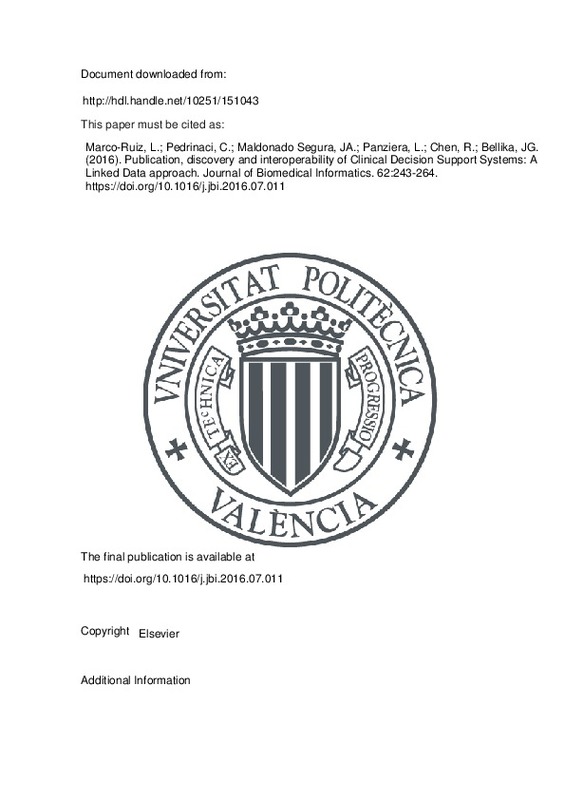JavaScript is disabled for your browser. Some features of this site may not work without it.
Buscar en RiuNet
Listar
Mi cuenta
Estadísticas
Ayuda RiuNet
Admin. UPV
Publication, discovery and interoperability of Clinical Decision Support Systems: A Linked Data approach
Mostrar el registro completo del ítem
Marco-Ruiz, L.; Pedrinaci, C.; Maldonado Segura, JA.; Panziera, L.; Chen, R.; Bellika, JG. (2016). Publication, discovery and interoperability of Clinical Decision Support Systems: A Linked Data approach. Journal of Biomedical Informatics. 62:243-264. https://doi.org/10.1016/j.jbi.2016.07.011
Por favor, use este identificador para citar o enlazar este ítem: http://hdl.handle.net/10251/151043
Ficheros en el ítem
Metadatos del ítem
| Título: | Publication, discovery and interoperability of Clinical Decision Support Systems: A Linked Data approach | |
| Autor: | Pedrinaci, Carlos Panziera, Luca Chen, Rong Bellika, J. Gustav | |
| Fecha difusión: |
|
|
| Resumen: |
[EN] Background: The high costs involved in the development of Clinical Decision Support Systems (CDSS)
make it necessary to share their functionality across different systems and organizations. Service
Oriented Architectures ...[+]
|
|
| Palabras clave: |
|
|
| Derechos de uso: | Reserva de todos los derechos | |
| Fuente: |
|
|
| DOI: |
|
|
| Editorial: |
|
|
| Versión del editor: | https://doi.org/10.1016/j.jbi.2016.07.011 | |
| Código del Proyecto: |
|
|
| Agradecimientos: |
This work was supported by Helse Nord [grant HST1121-13]; the EU project COMPOSE [FP7-317862]; the Spanish Ministry of Economy and Competitiveness and the FEDER program [grants TIN2014-53749-C2-1-R and PTQ-12-05620]. We ...[+]
|
|
| Tipo: |
|







![[Cerrado]](/themes/UPV/images/candado.png)


